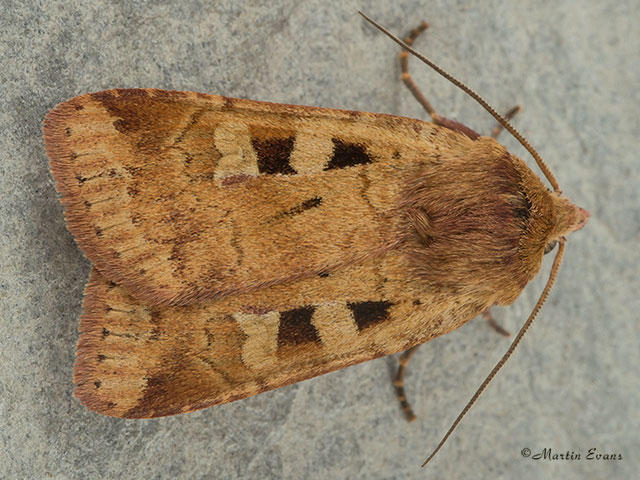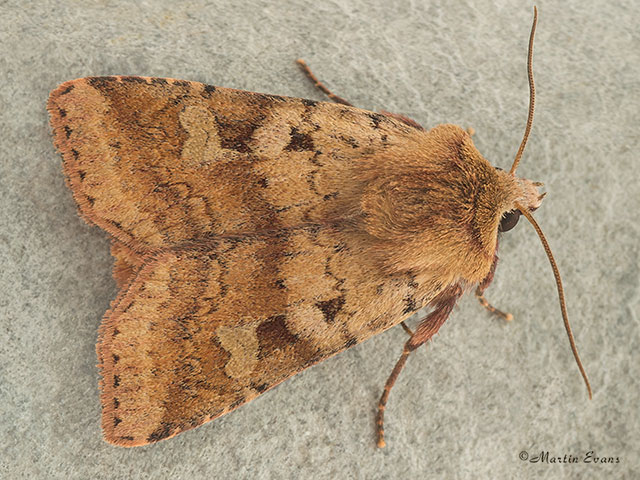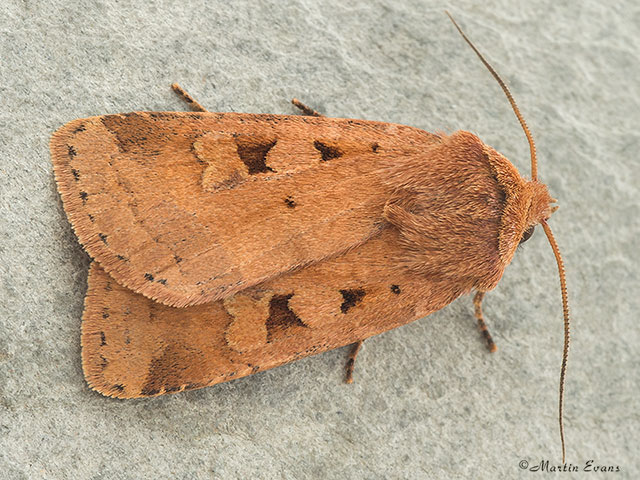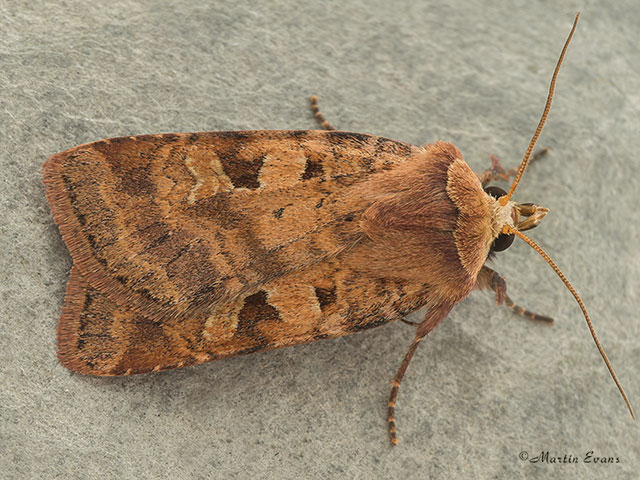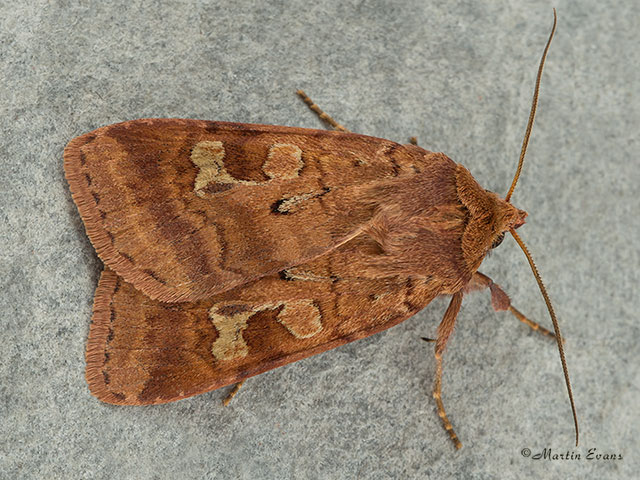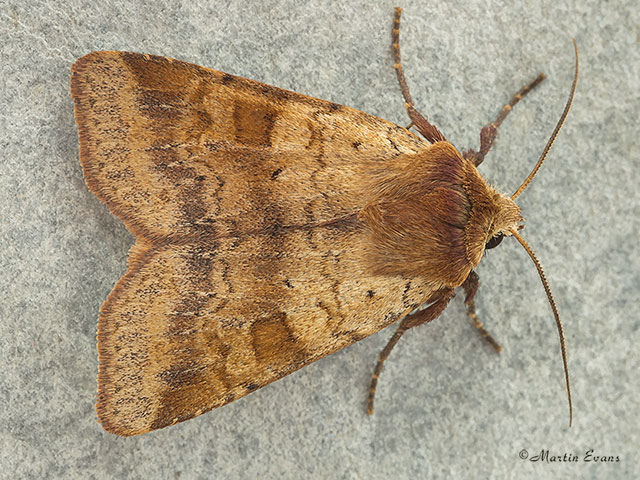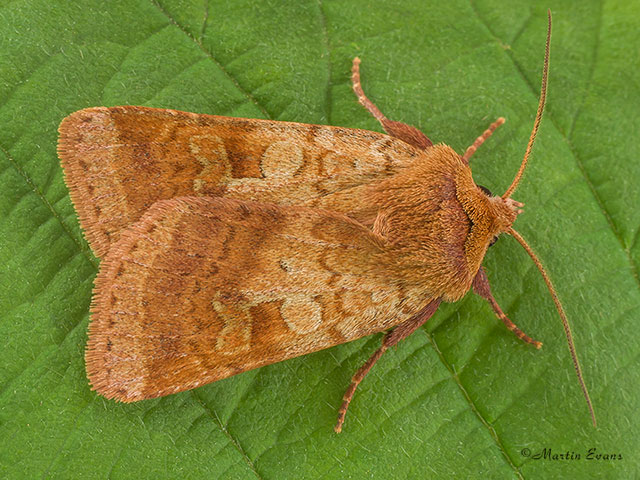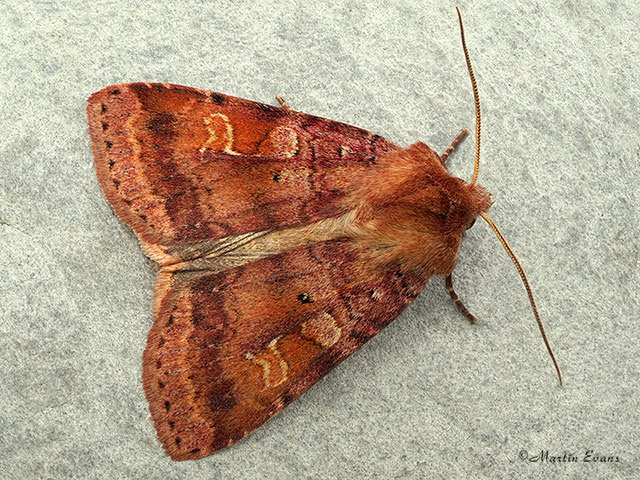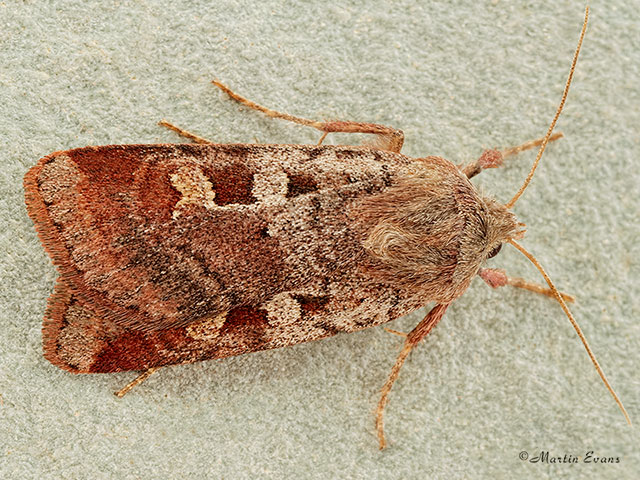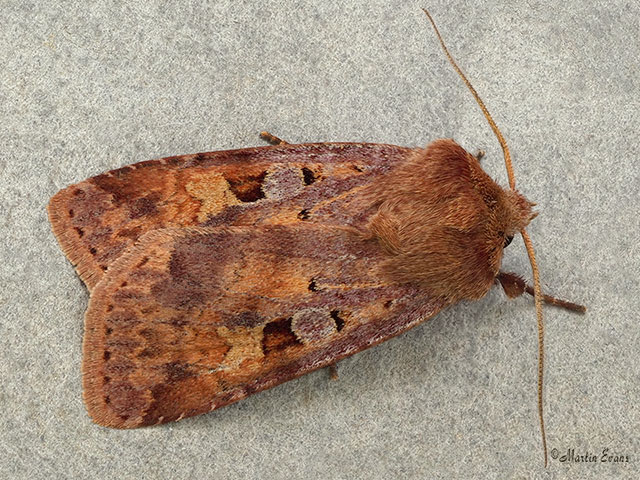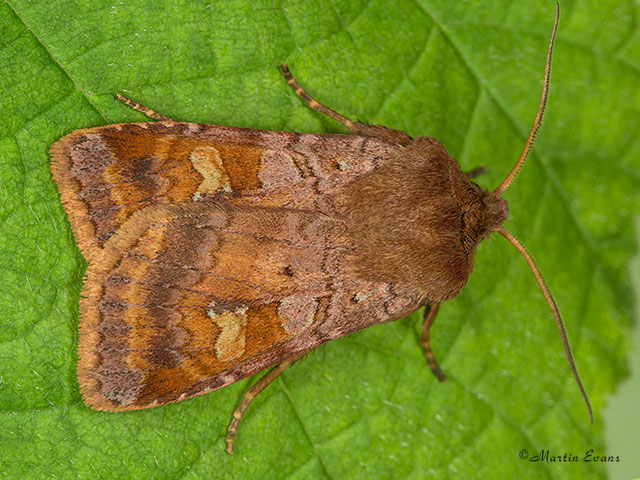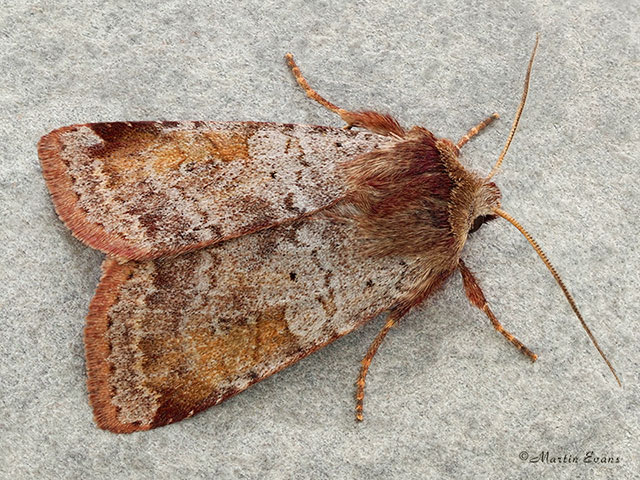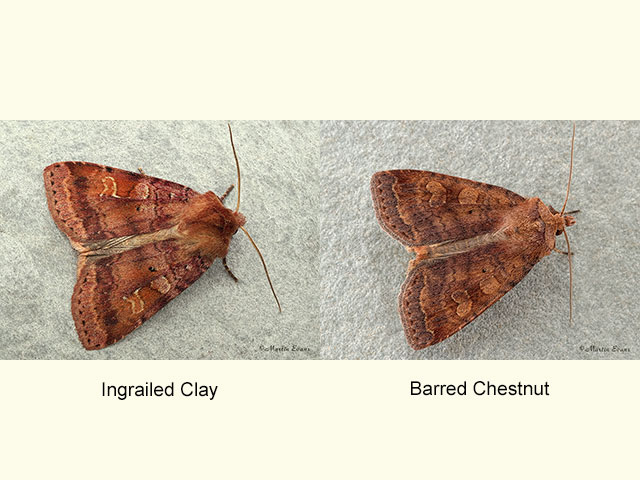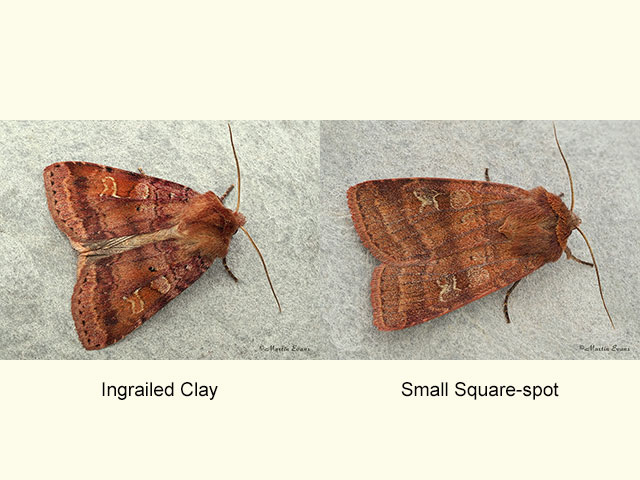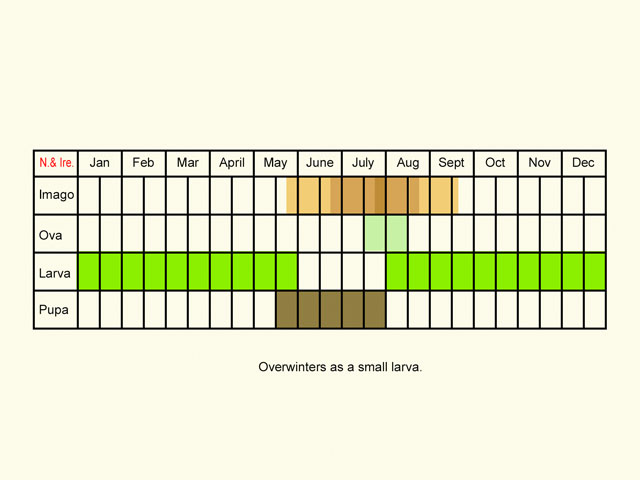Noctuidae
73.333 Ingrailed Clay Diarsia mendica mendica (Fabricius, 1775)
Common
Diarsia mendica thulei (Staudinger, 1891)
Shetland
Diarsia mendica orkneyensis (Bytinski-Salz, 1939)
Orkney
Similar species: Barred Chestnut Diarsia dahlii is on average larger (15 to 18mm) and has a curved leading edge to the forewing which is usually darker especially at the outer edge. It usually has a more prominent dark central bar and dark suffusion along the trailing edge. Small Square-spot Diarsia rubi is smaller (12 to 14mm). The outer central cross-line is usually much smoother.
Forewing: 13 to 17mm
Habitats: Mainly deciduous woodland and scrub in the south, but also on open moorland and heathland where it is common in the north as well as in the wooded habitats.
Habits: The moth visits flowers after dark and is attracted to sugar and light.
Foodplant: The nocturnal larva feeds on docks, plantains, Primrose, violets, Bilberry, Heather, Bramble, Hazel, sallows, Hawthorn, Blackthorn and other woody and herbaceous plants. It hides in the leaf litter or loose soil during the day. It pupates just under the soil surface.
